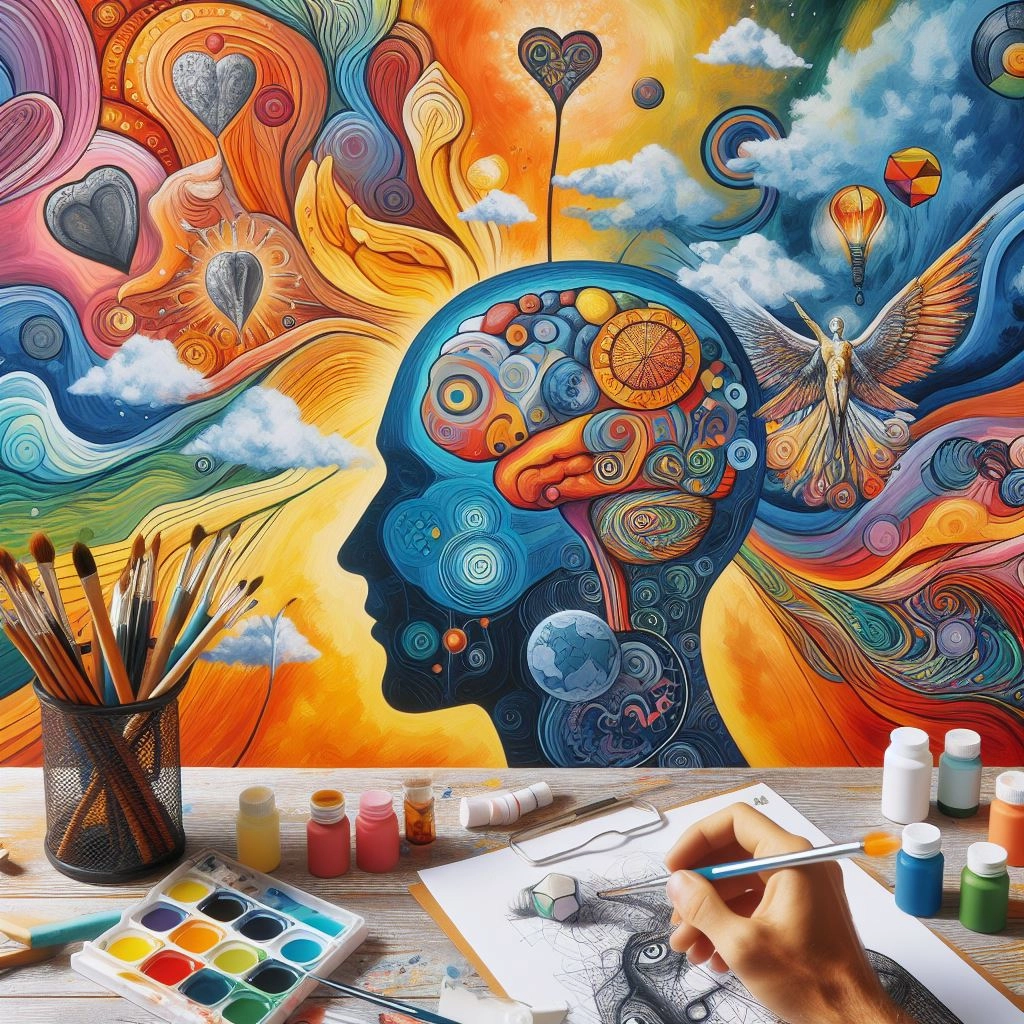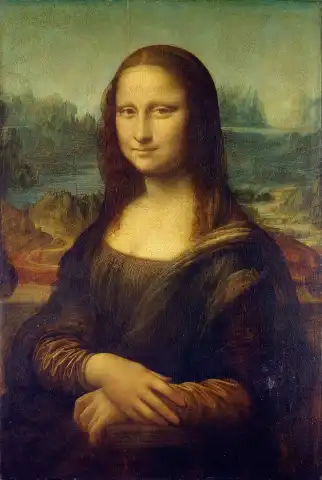Therapeutic art and mental well-being


Art Therapy Masters often emphasize the profound connection between creativity and mental health. Art therapy is a mental health profession that enriches the lives of individuals, families, and communities through active art-making, creative processes, applied psychological theory, enhanced social skills, and human experience within a psychotherapeutic relationship. Many cultures have accepted the idea that artistic expression may considerably aid in the healing process. Arts and creative therapies are treatments that involve creative activities within therapy sessions. This program helps address patients who are in need of mental health care, therapeutic outlet and/or emotional support—an essential part of the healing process, alongside their medical treatment.
The basis of art therapy is established on the idea that people can recover and feel better via artistic expression. The expanded definition of art therapy includes a variety of frameworks and approaches practiced by trained art therapists utilizing specific therapeutic goals. Art Therapy Ideas are vast and varied, extending far beyond traditional painting and drawing. They encompass a wide range of creative modalities, including:
- Visual Arts: Painting, drawing, sculpting, collage, photography, mixed media
- Performing Arts: Dance/movement therapy, drama therapy, music therapy
- Literary Arts: Poetry therapy, creative writing
- Expressive Arts Therapy Ideas often integrate multiple modalities, allowing individuals to explore their emotions through a variety of creative outlets.
Art Therapy Training provides therapists with the necessary skills and knowledge to effectively guide clients through the therapeutic art process. This training typically includes:
- Human Development: Understanding the psychological and emotional development of individuals across the lifespan. Visual and symbolic expression gives voice to experience and empowers individual, communal, and societal transformation. You will be a part of the therapeutic relationship, which is considered to be extremely unique.
- Art Therapy Theories: Exploring various theoretical frameworks that underpin art therapy practice, such as psychoanalytic, humanistic, and cognitive-behavioral approaches. It focuses on visual art therapy since it's key to reducing variation within the "creative arts" and defines the peculiar elements and effectiveness of art therapy used by mental health services.
- Art Therapy Techniques: Learning a range of art therapy techniques, including guided imagery, metaphor therapy, and expressive arts interventions. Art therapy combines psychological methods with creative expression, using various art forms like painting, drawing, and sculpting to help individuals work through emotional issues. Anyone who refers to themselves an art therapist, art psychotherapist, dramatherapist or music therapist must be registered with the Health and Care Professions Council (HCPC).
- Clinical Skills: Developing essential clinical skills such as assessment, diagnosis, treatment planning, and ethical considerations.
Mental Health Art reflects the intricate interplay between the mind and creative expression. It can manifest in a myriad of ways, from abstract paintings that convey inner turmoil to intricate sculptures that symbolize personal growth and transformation.
Creative Artwork produced in therapeutic settings often serves as a powerful tool for self-exploration and communication. By analyzing their artwork, therapists can gain valuable insights into their clients' thoughts, feelings, and experiences. These insights can then be used to inform the therapeutic process and guide clients toward greater self-awareness and healing.
Art Healing Center are dedicated spaces where individuals can engage in therapeutic art practices within a supportive and nurturing environment. These centers often offer a range of services, including individual and group therapy sessions, art therapy services, and community events. Some charity sector organizations offer arts therapies. You can also access arts therapies privately, although this can be expensive.
The Art of Healing extends beyond the creation of art itself. It encompasses the entire therapeutic journey, including:
- Building Rapport: Establishing a trusting and supportive relationship between the therapist and the client.
- Creating a Safe Space: Providing a safe and non-judgmental environment where clients can freely express themselves without fear of criticism.
- Encouraging Self-Reflection: Guiding clients to reflect on their artwork and its deeper meanings.
- Promoting Self-Discovery: Helping clients gain insights into their own thoughts, feelings, and behaviors.
- Fostering Emotional Growth: Supporting clients in developing emotional resilience and coping skills.
Art Healing Therapy integrates artistic modalities with traditional therapeutic approaches, such as cognitive-behavioral therapy (CBT) or psychodynamic therapy. This integrative approach can be particularly beneficial for individuals who may find traditional talk therapy challenging or prefer alternative forms of expression.
Mental Health in Art is a significant area of study that explores how mental health issues are portrayed and interpreted in artistic works. By analyzing art, researchers can gain a deeper understanding of societal attitudes toward mental illness, identify common themes and experiences, and contribute to the ongoing conversation about mental health.
Mental Health Clip Art can be a valuable resource for raising awareness about mental health issues. These images can be used in various ways, including:
- Educational Materials: Creating informative brochures, posters, and presentations for schools, workplaces, and community organizations.
- Social Media Campaigns: Developing engaging and impactful social media campaigns to destigmatize mental illness and promote mental well-being.
- Therapy Sessions: Clip art is utilized as a visual aid in therapy sessions to facilitate communication and explore emotional themes.
While art therapy typically involves a therapeutic relationship, which is considered to be the most important part of any type of therapy, there are certain elements and boundaries to a therapeutic relationship. One other common difference between art therapy and therapeutic art-making is how the actual art product itself is viewed. When exploring the connection between, and the role of, art and mental illness treatments, it's important to understand the difference between art therapy and art as a therapeutic approach. With support from your therapist, you might use art materials to express your feelings or experiences.
The Benefits of Therapeutic Art
Unlike formal art therapy, therapeutic art-making focuses on the creative process as a form of stress relief and personal enjoyment, without necessarily addressing mental health in a clinical sense. Therapeutic art is an integrative aspect of the mental health profession that combines knowledge and understanding of human development and psychology with visual arts. Art within therapy can use art media (paint, clay, pencils, markers, or other art supplies) and often the verbal processing of produced imagery.
- Emotional Release: Art provides a safe and non-judgmental outlet for expressing and processing a wide range of emotions, such as anger, sadness, fear, and joy.
- Self-Discovery: Engaging in creative activities can help individuals gain deeper insights into their thoughts, feelings, and behaviors.
- Stress Reduction: The act of creating art can be deeply relaxing and meditative, helping to reduce stress levels and promote a sense of calm and tranquility.
- Improved Communication: Art can facilitate communication between individuals and their therapists, allowing for a more nuanced understanding of their inner world.
- Increased Self-Esteem: Creating something beautiful and meaningful can boost self-confidence and a sense of accomplishment.
- Enhanced Coping Skills: Therapeutic art can help individuals develop healthy coping mechanisms for managing stress, anxiety, and other mental health challenges.
Who Can Benefit from Therapeutic Art?
Therapeutic art can be beneficial for individuals of all ages and backgrounds, including:
- Children and Adolescents: Addressing issues such as anxiety, depression, trauma, and behavioral challenges.
- Adults: Coping with stress, anxiety, depression, grief, and relationship issues.
- Individuals with Chronic Illnesses: Managing pain, coping with chronic conditions, and improving quality of life.
- Older Adults: Addressing issues such as loneliness, isolation, and cognitive decline.
- Individuals with Disabilities: Exploring creative expression and communication in alternative ways.
While therapeutic art can have therapeutic benefits, it lacks the structured guidance provided by a certified art therapist.
Finding a Qualified Art Therapist
Art Therapists are Master's level mental health professionals trained in visual arts, the creative process, human development and behavior, psychology, mental disorders, counseling theories and techniques, and social, cultural and family issues. Art therapists plan sessions to achieve therapeutic goals and objectives by selecting suitable materials and interventions for their clients. Art therapy involves the guidance of a trained and certified art therapist, specific therapeutic goals, and a formal therapeutic setting. The team at Therapeutic Arts Group places great emphasis on collaborative efforts with other healthcare professionals including speech therapists, physical therapists, and occupational therapists.
Conclusion
Therapeutic art offers a unique and powerful approach to mental well-being. By embracing the healing power of creativity, individuals can unlock their inner potential, cultivate resilience, and live more fulfilling lives.
Subscribe to our newsletter to get updated and enjoy a 10% voucher
Apr 23 2024 / Art Deco Advice



